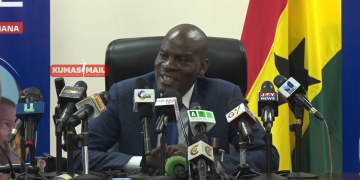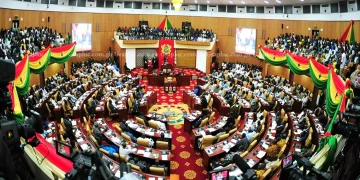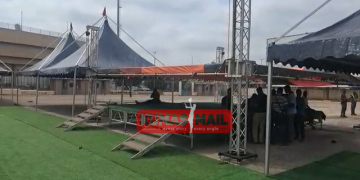Former spokesperson for Ministry of Education, Kwasi Kwarteng, has expressed skepticism about the National Democratic Congress (NDC) government’s ability to end the double-track educational system by 2027.
Kwarteng argues that the NDC lacks a deep understanding of the policy, which was introduced to manage increased enrollment following the implementation of the Free Senior High School (SHS) program.
The Minister for Education Haruna Iddrisu, yesterday April 9th announced plans to eliminate the Double-Track system in Senior High Schools by 2027.
This commitment was made during a meeting with the Conference of Heads of Assisted Secondary Schools (CHASS) in Sunyani, Bono Region.
This move by the NDC government, Kwasi Kwarteng believes, is a manifestation of their prior ignorance and cluelessness regarding the policy.
He said in a statement “In opposition, the NDC made it their mission to demonize the double-track policy; labelling it a “failure” and vowing to remove it within 90 days of assuming office. Today, our Education Minister now says the policy will remain until 2027.
“That’s not just a U-turn; it’s a manifestation of their prior ignorance and cluelessness regarding the policy”, he argues.
Kwarteng believes that the introduction of the Free Senior High School policy was not a political strategy but a constitutional duty.
“Let’s be clear; Free SHS was not just a political promise but a constitutional duty and a catalyst for socioeconomic progress.”
Kwarteng highlights the double-track system’s achievements, including reduced class sizes, improved teacher-student ratios, extended teaching hours, and job creation.
He explained “Double-track reduced class sizes, improved teacher-student ratios, extended teaching hours, and created jobs.
“Importantly, it advanced gender parity and gave underprivileged students access to elite schools like PRESEC, Wesley Girls, and Prempeh College, institutions that doubled intake to accommodate thousands who previously had no chance”.
Kwasi Kwarteng emphasizes that infrastructure alone is not the solution in facing out double track system; bridging the quality gap between schools is crucial.
He noted “The real challenge in facing out the policy has never been infrastructure alone, but preference. Each year, over 100,000 spaces go unused because students can’t be placed in schools they didn’t choose, despite availability.
He added “Until we bridge the quality gap between schools, buildings alone won’t solve this imbalance. That’s why our administration introduced STEM schools and upgraded them to Category A to shift demand and offer quality alternatives”.
Source : www.kumasimail.com /Kwadwo Owusu

































































